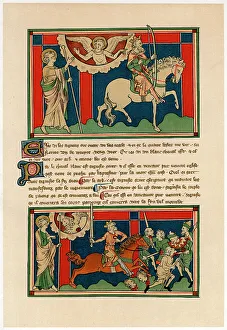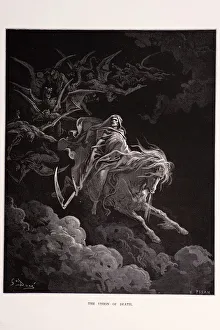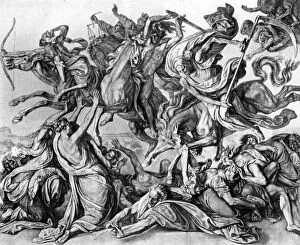Four Horsemen Of The Apocalypse Collection
"The Four Horsemen of the Apocalypse: Unveiling the Eternal Symbolism" Intriguingly depicted in various forms throughout history
All Professionally Made to Order for Quick Shipping
"The Four Horsemen of the Apocalypse: Unveiling the Eternal Symbolism" Intriguingly depicted in various forms throughout history, the enigmatic figures known as the they have captivated minds for centuries. Dating back to early 14th-century art and transcending time, these horsemen continue to evoke a sense of awe and fascination. From an engraving portraying their ominous presence to Martin Luther's translation of biblical texts, their significance is deeply rooted in religious beliefs. The Book of Revelation serves as a testament to their role as harbingers of cataclysmic events that shape humanity's destiny. One cannot help but be drawn into Rudolph Valentino's haunting portrait, where Death personified gazes upon us with chilling intensity. It reminds us that mortality is an inevitable part of life and that even legends succumb to its embrace. Wassily Kandinsky's abstract interpretation challenges conventional representations by infusing vibrant colors with chaos and movement. This artistic exploration invites contemplation on how these horsemen transcend physical form and embody universal forces beyond our comprehension. Albrecht Durer's meticulous craftsmanship transports us back in time, showcasing his mastery through intricate details that bring each horseman vividly to life. Their steeds gallop across ancient landscapes, leaving destruction in their wake—a reminder that no civilization can escape their impending arrival. Jean Duvet captures Saint John witnessing this apocalyptic vision—an encounter between divine revelation and human existence. Through his artistry, he immortalizes this pivotal moment when mankind confronts its own mortality while grappling with existential questions about faith and purpose. As we delve into history’s tapestry woven by countless interpretations, it becomes evident that the Four Horsemen are not mere symbols but reflections of our collective fears and hopes. They remind us to cherish every fleeting moment amidst uncertainty while urging introspection on our impact on society’s future course.













